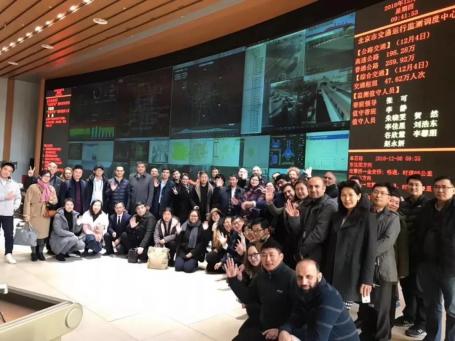“International Forum on Low Carbon Development for Central Asia Regional Economic Cooperation Program Cities” Held in Beijing
Central Asia is an important region for "Belt and Road" Initiative. In 2013, President Xi Jinping put forward a major initiative to build a "Silk Road Economic Belt" in Kazakhstan. Central Asian countries warmly responded and actively participated in this initiative, opening a new model of mutually beneficial and win-win international cooperation. Central Asia is experiencing rapid population and economic growth, accompanied by the influx of public and private investment. How to formulate climate-friendly policy planning and corresponding investment and financing plans against rapid urbanization? How to take transformative climate action at the local level to support NDCs? This has become both an opportunity and a challenge for major cities in this key region.
To promote substantive cooperation in Low Carbon City development, Asian Development Bank, together with World Resources Institute (WRI) and Wuppertal Institute, organized “International Forum on Low Carbon Development for Central Asia Regional Economic Cooperation Program Cities” with the theme “The City of Tomorrow: Sharing Low Carbon Experience for Green, Competitive, Resilient and Inclusive Cities” in December 4th-6th, 2018. Approximately 30 participants from CAREC cities, 100 representatives from Chinese cities and 50 experts at home and abroad joined the forum and shared their insights.
Teresa Kho, East Asia Deputy Director General of East Asia, Asian Development Bank, emphasized the importance of low-carbon urban development. "Cities need to get rid of the old ways of relying on carbon-intensive industrialization, disorderly expansion and environmental pollution. Asian Development Bank will continue to build up international exchange platform for sustainable development of low-carbon cities to help municipal governments improve their innovation capabilities and achieve a high-quality development transition that takes into account both economic growth and low-carbon goals."
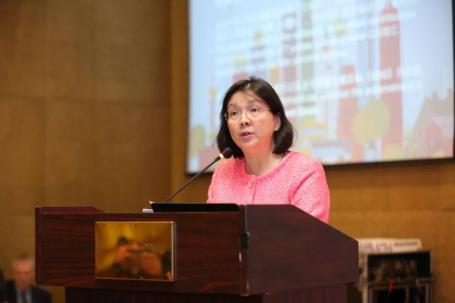
Xu Huaqing, Director General of National Center for Climate Change Strategy and International Cooperation, introduced China's efforts to participate in regional low carbon development cooperation through international platforms such as "Belt and Road" and "South-South cooperation".
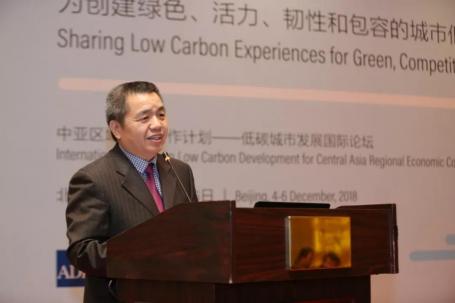
As Alex Perera, Deputy Director of WRI Energy Program, pointed out, ” There are three key areas for low-carbon city development: building efficiency, decarbonization in the power industry, and mitigation of traffic congestion. WRI has partnered with more than 100 companies around the world to help them integrate low-carbon development into their corporate development strategies. We will also rely on the institute's global network of experts to better help achieve the economic and social sustainable development of Central Asia.”
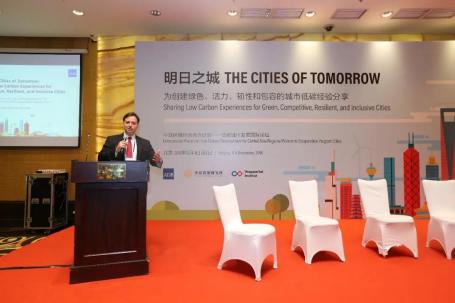
Manfred Fischedick, Vice-Chairman of the Wuppertal Institute, said, ” To build future-oriented cities, we need to fulfill the sustainable development goals and carry out cooperative innovation on the basis of respecting our own history and culture. All these are inseparable from a good policy environment, a wide range of cross-city exchange and cooperation platforms, and effective implementation.”
Aiming at cities with different structural characteristics and low-carbon development challenges, the project team and international experts shared their experience during the event. The low-carbon transition practices of Ruhr in Germany, Yokohama in Japan, Malmo in Sweden and Changde in Hunan Province of China provide valuable examples for carbon-intensive cities to explore low-carbon development paths. From the Sino-German Eco-City project, the case of low-carbon development in Shanghai's Changning District, as well as the sharing of urban disaster risk management and the low-carbon lifestyle of sustainable community in northern Europe, all these practices also share insights for rapidly developing emerging cities. Besides, energy and transportation are the main sources of urban emissions, and thus are the key sectors for carbon peaking. Therefore, experts and city representatives from international organizations and industrial sectors introduced the energy and transportation emission reduction initiatives in Shenyang, Baku, Azerbaijan, Seoul, South Korea and other cities at the meeting.
Technology and innovation are one of the focuses of the conference. A variety of tools on data collection, counting, tracking, processing and analysis, including WRI's GHGP, were presented. The discussion held that the digital revolution and technological innovation have provided more possibilities for the realization of the low-carbon path of cities, but only when cities create policy conditions to encourage technological innovation and application, and effectively use these data and tools in planning and project practice, can they really play a role. The interaction of public funds, green development funds and the private sector is the driving force for low-carbon urban development. The multi-participatory model not only provides financial support for the urban low-carbon path, but also guarantees the innovative development mode and effective project operation.
At the meeting, the Central Asia Regional Economic Cooperation Program - Low Carbon City Development Project team highlighted the progress of projects in Chang-Zhu-Tan city cluster, Astana and Ulaanbaatar. In these cities, through baseline GHG emission assessment, peaking scenario analysis, key indicators and priority areas of action, the project team strengthens local capacity while tailoring integrated low-carbon development strategies and action paths for the cities. The sharing of these pilot experiences will further scale up the project results in more Central Asian cities. At the same time, low-carbon city construction should suit local conditions, and there is no universally applicable model. Composed of international and local experts in various fields, the project team will further explore local solutions under international cooperation through the project platform in the future.
Zhang Hao, Deputy Country Director, China Resident Mission (PRCM) of Asian Development Bank, delivered closing remarks. "Adhering to the Asian Development Bank’s 2030 strategy, we attach importance to the synergies of emission reduction as well as smart city solutions in project planning and implementation," he said. “We expect to promote cross-city dialogue and exchanges through extensive cooperation across industries and regions.” He also invited guests to keep an eye on the project, which will see more results coming out at the Seoul forum in 2019.
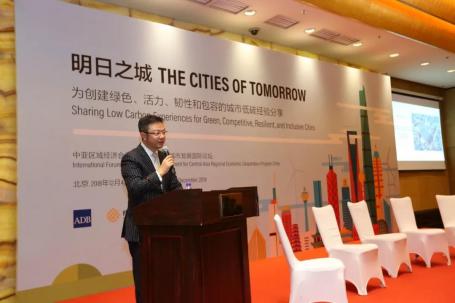
After the meeting, city representatives from China and Central Asian Countries visited Beijing Transportation Operations Coordination Center (TOCC) and Goldwind Smart Science and Technology Park. TOCC is the first provincial-level comprehensive traffic operation monitoring and coordination center built and put into practical use in China. It plays an outstanding role in government decision-making, industry supervision, enterprise operation and public traffic, and provides excellent practical experience for dynamic traffic operation monitoring and collaborative services in other big cities. Goldwind started from the end of last century in turbine manufacture and development. Currently, its business focuses on wind energy, energy internet and environmental solutions, as well as smart industrial park and green agriculture, Its smart industrial park in Beijing is located in Yizhuang area, and prioritizes distributed renewable energy. Through digital and smart technology, it realizes on-site energy generation, consumption and efficient use, providing China solution for global energy transition.
